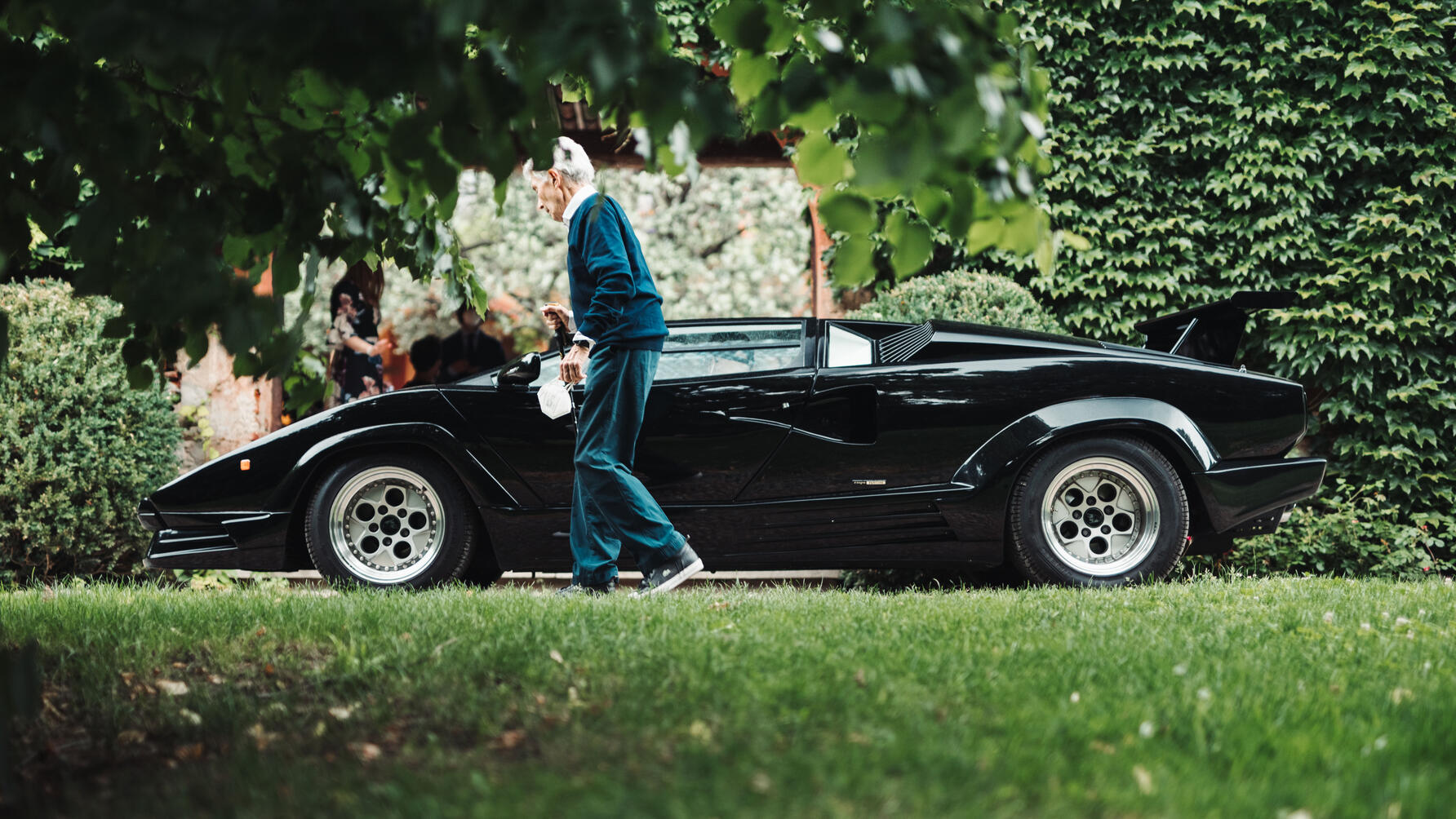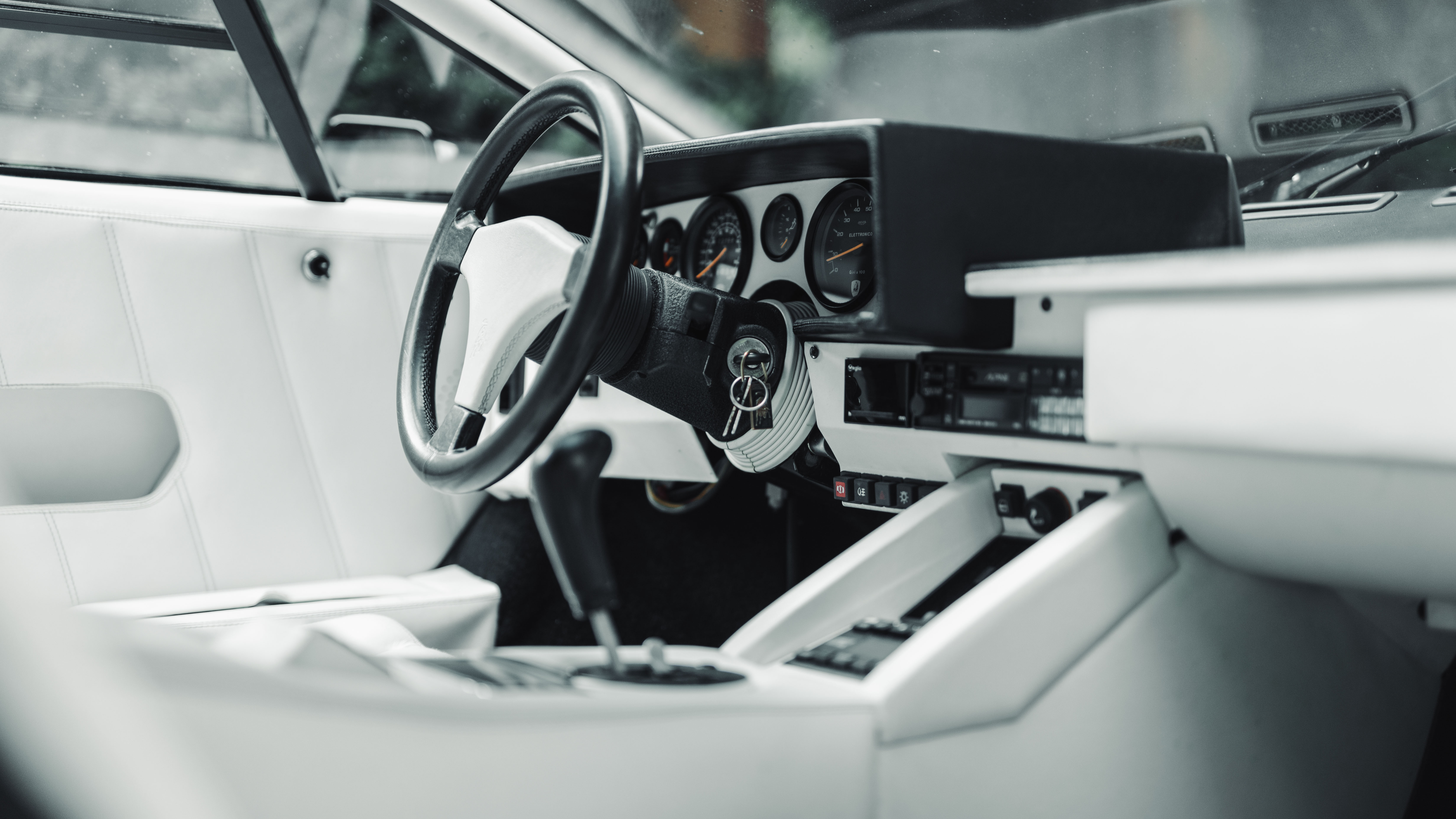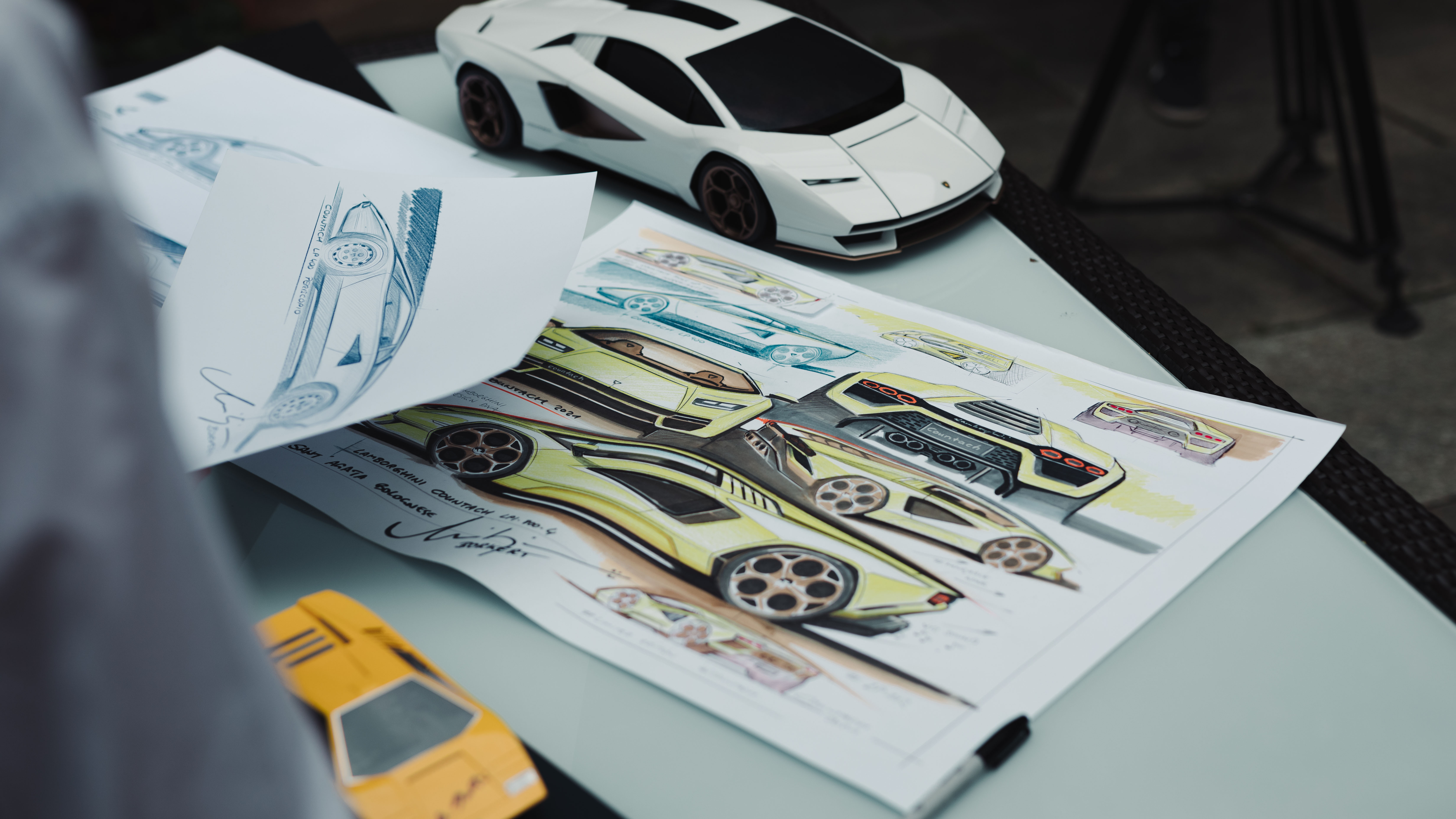
Marcello Gandini in 2021: "the Miura annoys me a bit"
Back in 2021, we visited the design genius at home in Turin to talk Miura, iPhones and what he really thinks about the modern remake of his most famous work...
This feature was originally published in the September 2021 issue of Top Gear magazine
There comes a time in life when some sentimentality or nostalgia is surely inevitable. Not if you’re Marcello Gandini. Here he sits in the atrium of his splendid house – a former abbey, which he converted himself, obviously – in the hills near the northern Italian powerhouse of Turin. He’s 83 now, a spry, elegant man lately in need of a stick to get about. But his mind remains as sharp as a tack, his views often mischievous, unconventional and philosophical. One of the true legends of car design, whatever status the world has conferred on him is lightly worn.
“Generally speaking, a car that everyone used to like isn’t liked any more, or it’s liked a lot less,” Gandini notes, a cigarette perched delicately between slender fingers. “The Countach, for better or worse, is still enjoyable to look at 50 years later. Whereas the Miura annoys me a bit.”
His eyes narrow and he runs a hand through an enviably thick head of hair. Cigarette ash tumbles to the floor. The Miura is widely regarded as perhaps the most unequivocally beautiful car ever made, the one started by Giorgetto Giugiaro just before he left Bertone in 1965 and completed by Gandini (although the exact nature of its authorship will forever be contested). It’s difficult to see what could possibly annoy anyone about it. Gandini, though, dismisses the car as a crowd-pleaser.
Photography: Dennis Noten
“It’s just not my thing anymore. When I designed the Miura it was important for me and Bertone to do something new that was acceptable to everyone. The Miura was aggressive but had a softness, it was more easily assimilated because it was in the tradition of great Fifties and Sixties sports cars. It was the beginning of my career so I was being prudent. After that, though, I wanted to do something totally different...”
Malcolm Gladwell’s book Outliers suggests that genius is rarely if ever born but is instead the result of family background, education, opportunity and hard work. No one doubts their brainpower, but Bill Gates and Steve Jobs also happened to be in the right place at the right time. The Beatles, meanwhile, had racked up 10,000 hours of practice before they signed their record deal. Sure, they had three world class songwriters but they grafted.
Gandini and Giugiaro were born within two weeks of each other in August 1938 and their careers took flight in a Turin that was awash with highly skilled fabricators working in a business that was booming off the back of Italy’s post-war economic miracle. Although each likes to be referred to rather grandly in conversation as maestro, neither thinks of himself as an artist so much as a problem solver. But both had artistic roots and Gandini, the son of an orchestra conductor, attended a Liceo classico in Turin. “I refused to play the piano because I was forced to do it when everyone else was outside playing games,” he recalls. “But I still have my father’s piano here.”
His first foray into car design came when he reworked a friend’s OSCA 1500 for a hillclimb. “I used wire mesh like you would on a chicken coop,” he says. “I was born a designer of mechanical things. But back then it was impossible to make a living doing that. I liked cars but in terms of making them go fast, not because of their shape. If you want a device you have to know what it’s for first. Otherwise how can you design it? You cannot separate design from mechanical substance. With regards to styling it’s a fact that you have to create emotion. Without it a car is useless.”
He takes a drag on his cigarette and rearranges his slight frame in the chair. More mischief. “When you’re young the important thing is to work because it’s important to eat. I got to eat every day by designing cars so in that sense I had some success.”
This is not a man who dwells much on his past, and the memories commingle with some left-field musings. His early sketches were done directly onto his bedroom floor, he says, and he confesses he didn’t really have a clue what he was doing. By the time he came to Bertone’s attention, he’d racked up some credits for notable carrozzerie, including Touring and Ellena. He says that Giugiaro threatened to leave if Bertone hired him, but then his great rival departed anyway.
Once he got going, Gandini barely drew breath. He rarely slept either. The Miura’s design was completed at midnight on Christmas Eve 1965, the prototype constructed and ready for the Geneva show barely two months later. “It took 24 days to produce the first model,” he remembers. He worked for 66 hours straight on another project before finally relenting and getting some shut-eye. For 1967’s Marzal – all sci-fi dazzle and impossible glazing – he and his team worked through the night to finish the one-off show car, only for a cleaner to turn up at 6am, take one look at it, and throw his broom down in disgust. Everyone’s a critic...
Top Gear
Newsletter
Thank you for subscribing to our newsletter. Look out for your regular round-up of news, reviews and offers in your inbox.
Get all the latest news, reviews and exclusives, direct to your inbox.
Then came the Countach, the original and arguably definitive disrupter. “We wanted to distance ourselves as much as possible from what had gone before,” Gandini explains. “It was important not to repeat anything at all, to do something completely different. For me, this has always been critical. A Lamborghini should be a Lamborghini, but above all it shouldn’t be like any other Lamborghini. I don’t want to sound pompous but the Countach is more like a work of art because it wasn’t conceived to please people, it had to have its own soul.”
The name, he says, came from one of the guys who worked for him. “He was a huge man, very strong, with enormous hands. He spoke almost entirely in the Piedmontese dialect and he used the term often. It actually means ‘contagion’ but he used it in the sense of admiration or amazement. I chose the name and we cut out the script that appeared on the show car and stuck it on. No one saw it until the car went to Geneva.”
I ask him if he regards the Countach as the apotheosis of an idea he began developing on 1968’s Alfa Romeo Carabo and 1970’s Stratos Zero. The former pioneered the famous scissor doors, while the latter introduced the ‘wedge’ silhouette that audaciously rejected the sensuous form language of countless beautiful and mostly Italian sports cars from the previous two decades. What was he thinking? Or smoking and drinking?
“Well, they’re from the same family, let’s say. It was about the evolution of surfaces that was not too common at the time and trying to create something that made sense. I don’t know to what extent logic was involved although that’s something we’ve been taught about since the period of the ancient Greeks. Look, there are times when you succeed in obtaining a result, and times when you don’t. I don’t question this part of the process but I do sometimes question why I’ve made bad cars.
"There were periods when unfortunately I allowed myself to be influenced and I made bad things, or at least things that weren’t good enough. I always preferred having to do things in a short amount of time, when I have less time to listen to other people or when I’m forced into a corner.”

He pauses, and gently positions his cigarette in the ashtray on the table. I read a quote to him, in which he says he prefers the “archive of memory that easily erases the disagreeable items”. There’s a hint of a smile, the first.
“Honestly I prefer to think about the future, or current things. I’ve always refused to live in the past except that people kindly take an interest in my life. I would have a hard time living if I didn’t think about what I would like to happen tomorrow.”
I ask him what he thinks of Apple’s iPhone. “I have all the admiration I can muster for Steve Jobs who invented that. Obviously if others hadn’t already done things, from quantum theory onwards, the cell phone wouldn’t even exist, and Jobs might not have done anything... but as it is, he took an incredible step.”
Marcello Gandini, you sense, is not easily impressed. His house is fabulous, and he’s proud of another that he designed and built in Corsica. There’s also a helicopter, a truck, and the interior of a Turin nightclub on his CV. But this architect of some of the greatest and most influential cars ever made doesn’t have a garage stuffed with exotica. Not his style, you could say. A Lamborghini employee tells me that when Gandini last visited the factory in Sant’Agata he turned up in the family’s rather careworn Mitsubishi Colt. He remains an engineer of ideas, the archetypal problem solver. And there are still problems to be solved.
I think about what I would like to happen tomorrow
“There has been an enormous evolution in car manufacture. But what has really been achieved? Man has been replaced by a robot, yet the operations have remained more or less the same. I had an idea about reducing the size of factories, rather than just replacing humans with robots. That makes no difference, although robots are more reliable. I wanted to reduce the size and cost of the factory itself, and also to drastically reduce the number of components and pieces of sheet metal needed to make a car. I took out some patents for this concept and sold them to Renault in the Eighties and another one to India. But no one has the strength, power or will to change the actual factory concept.” With that, he stubs out a cigarette.
I want to ask him about the concept of ‘hauntology’ – a nostalgia for lost futures, as coined by philosopher Jacques Derrida – and the persistent presence of past objects. Is the man who designed the future destined never to escape it? But Gandini has another meeting, this one with Lamborghini’s design director Mitja Borkert who has just arrived from Bologna. Among other things, he wants to show him a model of the ‘new’ Countach, the 50th anniversary car. The past explicitly haunting the present, and brilliantly so.
Touchingly, and despite his own formidable CV, Borkert remains a true design fanboy. He’s brought a model of the LP500 and a Gandini biography for the great man to sign. But he’s also masterminded the ultimate homage, and it’s apparent he’s a little nervous as he presents it to his predecessor. “For years I’ve been studying the essence of the Countach,” he says. “The silhouette influences all Lamborghinis. I was joking with my designers that between the concept car and the first production car you added the air intakes and the NACA duct. We faced the same challenge today because the wind hasn’t changed...”
And then the master smiles at the apprentice. “Good job,” he says simply.
Remembering the great Marcello Gandini, who has died aged 85
Trending this week
- Car Review
BMW 1 Series











